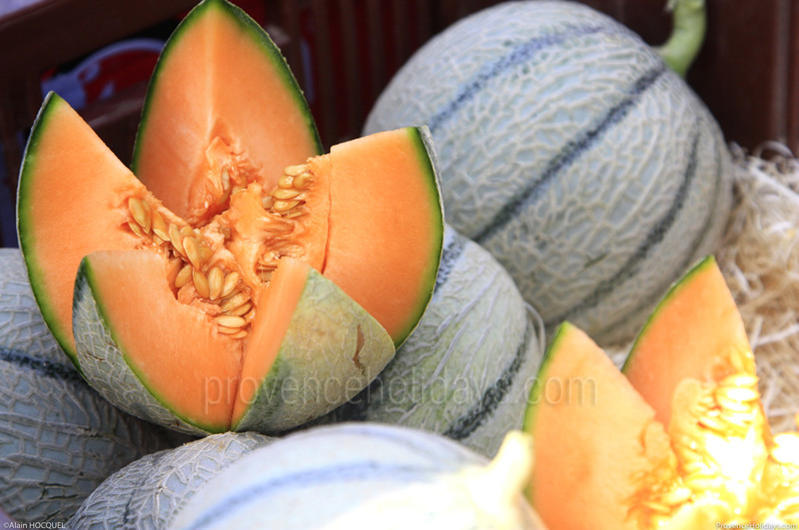Melon
History
A member of the gourd family, the melon is thought to have originated in Africa. It was cultivated by the Egyptians 500 years before our era, and was found in Greece and then in Italy around the first century. In France, it appears in archive texts as early as 1495. During the Renaissance, monks cultivated it for the popes at their summer residence in Cantaluppo, near Rome, hence the name "cantaloupe" melon. By the end of the 16th century, it was widely grown in the south of France. In the 17th century, Anjou and Touraine produced them for the king's court and the Charente became an important producing region. In the mid-19th century, melon cultivation was developed in Cavaillon.
Varieties and Flavours
Today there are no less than 70 varieties of melon. Among the best known:
- Charentais Cantaloupe: with orange flesh and a round shape, it represents more than 80% of French production. Full of sunshine, it contains many vitamins!
- Italian Brodé: with its raised corky rind, it is a little less fragrant than its cousin from the Charente, but more resistant.
- Canary: with white flesh in a yellow bark and an elongated shape.
- Galia: with emerald-coloured flesh and a round shape.
- Piel de Sapo: with white flesh and green skin.
The Question on Everyone's Mind
How do you choose the perfect melon?
- Weigh it: the heavier it is, the more sugar it contains.
- Check that the tail of the melon (the pecou or stalk) is starting to come off. This means it is ripe.
- Smell it: if it smells sweet, it is ready to be eaten.
- Touch it: if it is firm, go for it! If it's soft, run away!
- Examine it: a good melon should have at least 10 slices (stripes) on its skin.
How to Eat Them
Full of water, rich in vitamins and carotene, the Charentais or Cavaillon melon is now produced in the heart of Provence, in the departments of Vaucluse, Bouches-du-Rhône and Alpes-de-Haute-Provence. It is very popular throughout the summer season, as a starter, in salads or as a dessert.
A Recipe
Cavaillon Melon and Prawns with Green Aniseed Skewers:
|
Preparation time: 15 minutes Cooking time: 7 minutes Difficulty: Easy Cost: €€ |
Ingredients for 4 people: |
- Cut the melon into 1cm cubes after peeling and removing the seeds.
- Shell the prawns.
- Skewer the melon cubes and prawns (3 per person).
- Season with salt and pepper and sprinkle with green aniseed.
- Cook in the oven for 6 to 8 minutes at 180°C (gas mark 6).
- Arrange the skewers on a bed of salad and season with a light olive oil dressing to taste.
- Enjoy!
Where to Eat Them
At the famous restaurant Maison Prévôt, ![]() 353 Avenue de Verdun, Cavaillon.
353 Avenue de Verdun, Cavaillon.
Chef Jean-Jacques Prévôt has set up his restaurant in a former melon warehouse and the decor pays tribute to the vegetable in all its forms: paintings by the chef, melon-shaped carafes, books on the star vegetable, etc.
The cuisine is gastronomic and delicious! In season, an entire menu is dedicated to melons!
Where to Buy Them
On every market stall in Provence!
Melon Events
The weekend before 14 July, the Féria du Melon takes place in Cavaillon. The melon is, of course, honoured by large banquets, tastings in the streets, exhibitions, tours, cooking competitions, etc. Due to the pandemic, the festivals may have been cancelled this year. Ask the tourist office for information during your stay.

